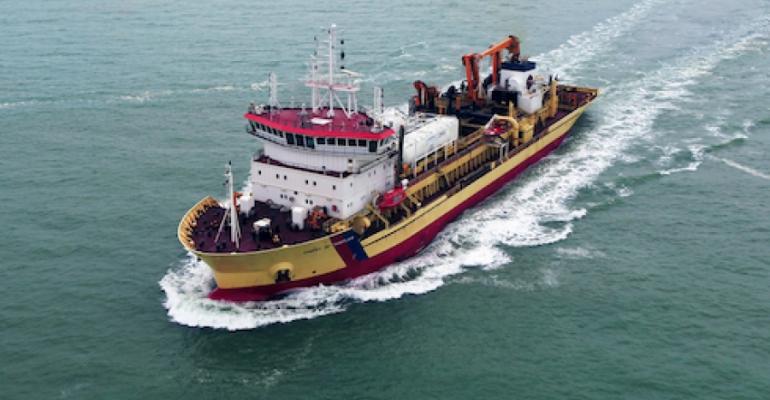The 117 metre-8,500 cu m-trailing suction hopper dredger Samuel de Champlain is owned by Rouen-based GIE Dragages-Ports and operated by the Port of Nantes-Saint-Nazaire.
Damen delivered a turnkey package that included engineering, procurement, installation, commissioning and support. Key features included changing of the engines to dual-fuel (LNG/Diesel) models, the installation of onboard LNG storage facilities, and maintenance support for eight years.
The DSDu team encountered and overcame a series of unforeseen challenges from the start including significant revisions to the detailed engineering after a decision was taken to install different engines than had originally been planned. The new engines are considerably larger than those first specified and so DSDu had to build an entirely new engine room in their workshop.
The new engine configuration resulted in the need for a considerable renewal and extension of all piping and 25 tonnes of piping were reengineered, fabricated and installed. This was the first dredger conversion using this type of propulsion, setting the parameters for the engine performance.
“We knew at the outset that this project would be a voyage into uncharted waters,” said Mark Jan van den Akker, Managing Director of DSDu. “We have however acquired much valuable experience along the way that we can apply to future works of this type. It was definitely worth going the extra mile to successfully deliver this ground-breaking project. We hope she will pave the way to greatly reducing the emissions of a class of vessels that typically works close to the shore.”
Copyright © 2024. All rights reserved. Seatrade, a trading name of Informa Markets (UK) Limited. Add Seatrade Maritime News to your Google News feed.


